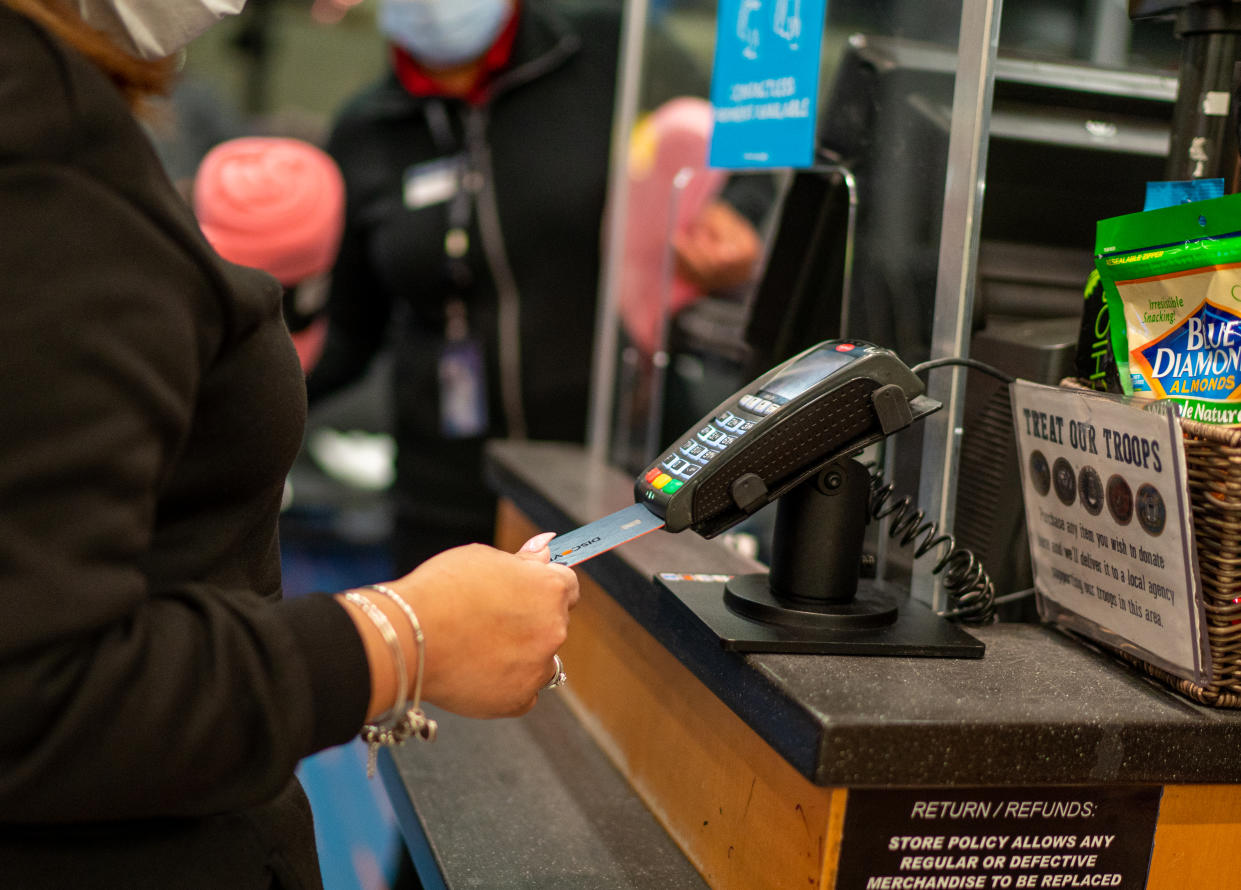For folks carrying $10,000 in credit card debt — or any amount at all — now is the time to pay it down before the Federal Reserve pushes interest rates even higher.
“It's a really, really tough time to have credit card debt,” Matt Schulz, chief credit analyst for LendingTree, told Yahoo Finance Live (video above).
Credit card debt balances increased by $38 billion to $925 billion in the third quarter of 2022, according to the latest data from the Federal Reserve of New York, marking a 15% year-over-year rise and the largest jump in over 20 years.
At the same time, rates on credit cards have rapidly increased as the Fed hikes its benchmark rate to combat inflation. The average rate on a credit card increased to 20.4% in November, the NY Fed found, up roughly 2 percentage points from the previous quarter and the highest level since the Fed first began tracking in 1994.
The best way borrowers could reduce that debt is by “really trying to control that interest rate,” Schulz said. Here are the three things you can do.
Get a 0% balance transfer card
Instead of paying 20% in interest, pay 0% before the Fed hikes rates again.
“One of the best tools that they have in their arsenal against rising interest rates is a 0% balance transfer credit card,” Schulz said. “It may seem counterintuitive to folks to get a new credit card as a way to fight credit card debt, but these cards are widely available, especially if you have good credit.”
With a 0% balance transfer card, borrowers can avoid paying interest on transferred balances for up to 21 months, depending on the card’s promotional terms. But borrowers should act fast because some lenders may shorten the introductory periods on these cards as the Fed continues to increase rates, Schulz said.
“While rates have gone up like crazy and it's a daunting time for anybody with credit card debt, a tool like a 0% balance transfer card is a really, really good option,” Schulz said.
Get a low-interest personal loan
A personal loan can also be used to pay off your credit card debt as long as you qualify for a loan with a lower interest rate than your current credit card.
In addition to carrying lower interest rates than credit cards, personal loans also have set payoff schedules and balances that you can’t add to, so you can avoid ballooning your debt. Another big plus: When you pay off your credit card debt in full with a loan, you can almost instantly boost your credit score.
Still, it’s no free lunch and you have to remain disciplined to pay down the personal loan balance. Missed payments can hurt your credit score. To get the best loan terms, shop around.
Ask for a lower APR
Another option many credit cardholders don’t think about is as straightforward as asking their credit card issuer for a lower interest rate.Last year, 70% of cardholders who requested a lower APR rate got their way, according to a LendingTree report.
“In some cases, it's a matter of just calling and asking,” Schulz said.
But the better way is to come with “a little ammunition,” Schulz said, like other credit card offers you got in your email or saw online. Present that to your issuer when you have them on the phone, noting you are ready to take the offer for a card that has a much lower interest rate unless they match it or exceed it.
“Chances are if you've been a good customer, they're going to at least listen to you and work with you,” Schulz said.
Gabriella is a personal finance reporter at Yahoo Finance. Follow her on Twitter @__gabriellacruz.
Click here for the latest economic news and economic indicators to help you in your investing decisions
Read the latest financial and business news from Yahoo Finance
Download the Yahoo Finance app for Apple or Android
Follow Yahoo Finance on Twitter, Facebook, Instagram, Flipboard, LinkedIn, and YouTube.
Source: Read Full Article




